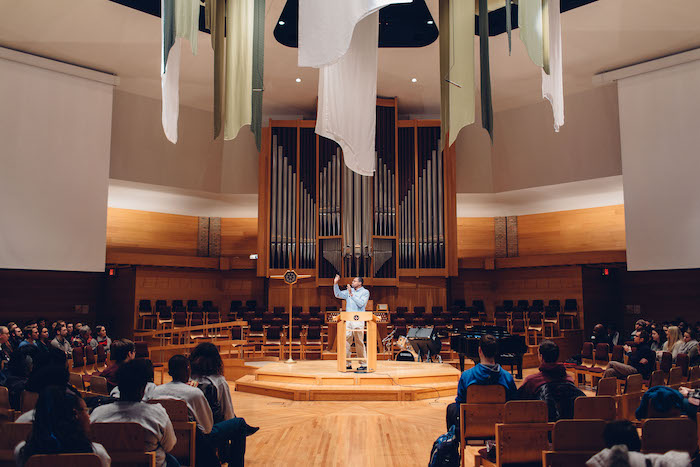In a phrase, rainscaping can be thought of as managing rain water where it lands. It is the process of enhancing a landscape or property to better manage the stormwater draining off that area. Rainscaping seeks to interrupt the "urban water cycle" before the stormwater flows into the storm drain, lessening stormwater surges and preventing pollutants from getting into the creek.
Everyone can do something
If you are interested in implementing any of these practices on your property, you can work with us or a number of green infrastructure and native-plant businesses in Michigan. Plaster Creek Stewards is a member of the Native Plant Guild, a group of businesses focused on growing native plants, creating designs, installation, and maintaining rainscaping projects.
For more information about rainscaping and the Grand River, check out these resources from Lower Grand River Organization of Watersheds.
Examples of rainscaping

Native landscaping
Native landscaping, sometimes called native revegetation, refers to the process of replacing lawn grass or non-native landscaping with native plants. Because native plants have been here since before European settlement and are adapted to our local climate, they need far less care and maintenance to survive. Because they’ve existed in the area for so long, native animals (including pollinators) naturally recognize them as food and shelter. They also play critical roles in the life cycles of our native insects that depend on specific local plants for nourishment and protection. Many residents, gardeners, businesses, and landscape designers are turning toward native landscaping for its more sustainable maintenance needs and its many benefits to our ecosystem and communities.

Bioswales
Bioswales are similar to rain gardens in that they are vegetated depressions for capturing stormwater and allowing it to percolate into the ground, but bioswales are designed – often by engineers – for heavy-duty stormwater management. They are often bigger and less formally planted and manicured than rain gardens. Bioswales can be commonly found by parking lots and within large expanses of lawn.
Unlike rain gardens, bioswales are usually connected to a storm drain or overflow area. Rocks, soil, and native plants within the bioswale filter some pollutants out of the water and slow it down. Plant roots soak up a lot of the water, and the rest flows into the drain cleaner and slower than it had been before. This helps to keep pollutants out of our streams and prevents flooding.
Vegetated buffers
Vegetated buffers are an important practice for farmers or anyone who owns land bordering the creek or any of its tributaries. Keeping native trees, shrubs, grasses, and/or wildflowers on the banks of the creek benefits water quality in several ways:
- Erosion control: Native plant roots form extensive networks in the soil, helping hold it in place and keeping banks from eroding and washing into the creek.
- Shade: Trees and shrubs provide shade to the creek. This cools the water, improving habitat and preventing algal blooms.
- Filtering: Plants intercept runoff, filtering out nutrients and trapping sediment. In an agricultural setting, they help filter runoff that may contain animal manure and E. coli bacteria, preventing health risks downstream.

Floodplain restoration
A natural, unaltered stream has spaces along it called floodplains. When the stream swells with rainwater, these floodplains become overflow spaces. The floodplain filters and slows down the water, filtering and slowing it down. The water level doesn’t fluctuate much and stays cleaner, remaining habitable for aquatic plants and animals.
Today, we have buildings, lawns, and parking lots that border the water’s edge. Now when it rains, the creek becomes a fast-flowing current that erodes the stream banks and causes the downstream water level to rise significantly. This change has made the stream uninhabitable for aquatic creatures and unsafe for those who live next to the creek.
Floodplain restorations stabilize eroded stream banks and create space for the creek to spread out and slow down when the water level gets high. This allows for natural flooding where it belongs and decreases downstream flooding in areas where it may become a hazard. Native floodplain plants are added to the space to help filter out pollutants while providing habitat for native wildlife.

Rain gardens
The classic rain garden is designed to be an endpoint for stormwater that runs off a property or some type of impervious surface like a parking lot, rooftop, or lawn. Planted with native plants, a rain garden captures stormwater and allows it to percolate through soil layers and into the water table in a slower, healthier, and more natural way. This percolation process filters out sediment and other pollutants that would otherwise flow into our local waterways, and it reduces the potential for flash floods.
For a more technical overview of rain gardens, complete with calculations, procedures, and site analyses, check out the Michigan Low Impact Development guide's chapter on rain gardens.






